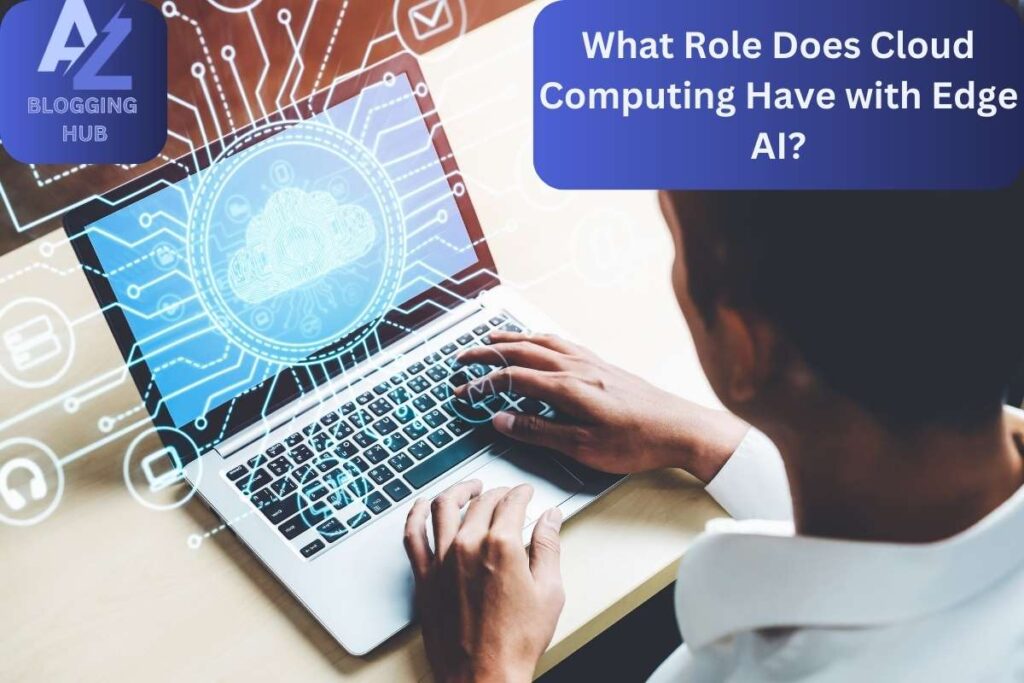What Role Does Cloud Computing Have with Edge AI?
Introduction
Imagine driving a smart car that helps you stay in your lane, adjusts speed, and even stops in emergencies. What’s powering these intelligent features? Edge AI plays a crucial role, making split-second decisions right within your car. However, for this system to work seamlessly and adapt over time, it often relies on cloud computing. This article explores the relationship between Edge AI and cloud computing, and how these technologies enhance one another to create smarter, more efficient systems.
Edge AI vs Cloud AI: What’s the Difference?
Understanding the difference between Edge AI and Cloud AI helps clarify the role of cloud computing in Edge AI. Edge AI processes data locally on devices or systems, while Cloud AI relies on remote servers for data processing. The key distinction lies in location and latency—Edge AI offers real-time responsiveness, whereas Cloud AI handles more complex tasks requiring substantial computing power.
What you need to remember:
- Edge AI is ideal for tasks that require low-latency and real-time responses.
- Cloud AI is better suited for complex tasks involving large datasets and heavy computing.
Edge AI Applications: Real-World Uses
To better understand the role of cloud computing in Edge AI, let’s explore some real-world applications across various industries:
- Autonomous Vehicles: Edge AI makes real-time driving decisions like braking or lane-keeping, while the cloud processes vast amounts of driving data to improve algorithms over time.
- Security Systems: Edge AI detects immediate threats in real time, while cloud computing stores footage and analyzes trends for future improvements.
- Manufacturing: Edge AI detects machinery faults instantly, and the cloud performs data-heavy tasks like predictive maintenance.
AI Edge Computing: How Cloud Computing Enhances Edge AI
Edge computing refers to processing data closer to where it’s generated. Edge AI relies on AI edge computing for its speed and efficiency. However, cloud computing becomes essential when more advanced data analysis or training of machine learning models is needed.
The cloud enhances Edge AI by:
- Training AI models: Models are often trained in the cloud using large datasets and then deployed to edge devices for real-time decision-making.
- Providing scalability: While edge devices may have limited resources, the cloud can handle massive computations and store vast amounts of data.
Edge AI Applications: Where They Find Use
Edge AI is being used across multiple industries. Here are some key sectors:
- Healthcare: Wearables powered by Edge AI enable faster diagnostics and real-time patient monitoring, while cloud computing stores patient data and performs deeper analytics for future treatments.
- Manufacturing: Edge AI runs machines, detects faults, and responds to issues in real time. The cloud then analyzes production data to optimize processes.
- Retail: Smart checkout systems powered by Edge AI improve the shopping experience, while the cloud helps manage customer preferences and inventory.
Edge AI Tools: Essential Platforms and Software
To effectively implement Edge AI, several tools and platforms complement cloud computing:
- NVIDIA Jetson: Widely used for Edge AI in robotics and autonomous vehicles.
- Google Cloud AI: Provides tools to train models in the cloud and deploy them on edge devices.
- Microsoft Azure IoT Edge: Allows businesses to run AI at the edge while leveraging the cloud for storage and model updates.
These tools are key in optimizing the connection between Edge AI and cloud computing.
AI at the Edge PDFs: Accessing Comprehensive Resources
For those looking to dive deeper into Edge AI and its relationship with cloud computing, numerous AI at the Edge PDFs are available online. These resources provide technical insights and case studies to help you implement Edge AI in your business.
Edge AI Projects: Real-World Innovations
Here are some notable Edge AI projects where cloud computing plays a critical role:
- Smart Agriculture: Edge AI sensors monitor crops in real time, while the cloud analyzes soil data to improve farming techniques.
- Traffic Systems: Edge AI manages traffic flow instantly, while the cloud processes city-wide traffic data to reduce congestion.
- Oil Rigs: Edge AI detects issues on remote oil rigs, while cloud computing stores and analyzes operational data to optimize processes.
What Is Edge Computing?
To fully appreciate the role of Edge AI, it’s important to understand edge computing. This is the process of minimizing latency by processing data closer to its source. While Edge AI handles real-time actions, cloud computing takes care of large-scale analytics and model training, creating a balanced system that offers both speed and intelligence.
Conclusion
The relationship between Edge AI and cloud computing is like a well-choreographed dance. Edge AI handles real-time tasks with low latency, while cloud computing provides the heavy lifting—model training, data storage, and scalability. Businesses that integrate both technologies can benefit from improved decision-making and long-term intelligence. Ready to invest in Edge AI and cloud computing to enhance your operations? With the right strategy, these technologies can give your business a competitive edge and boost overall efficiency.



